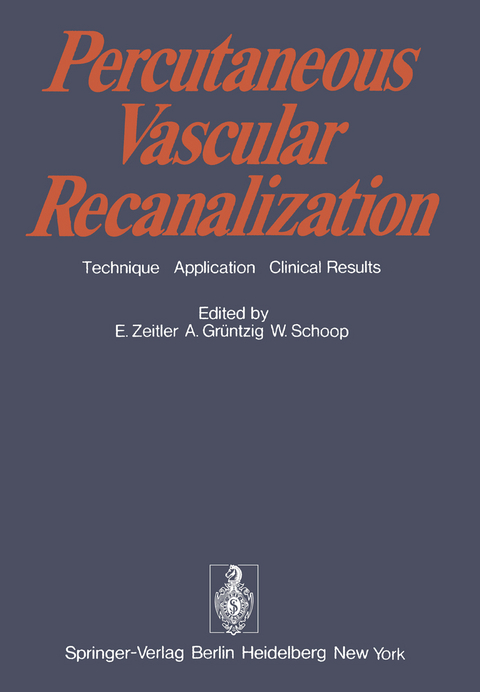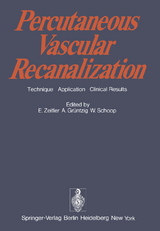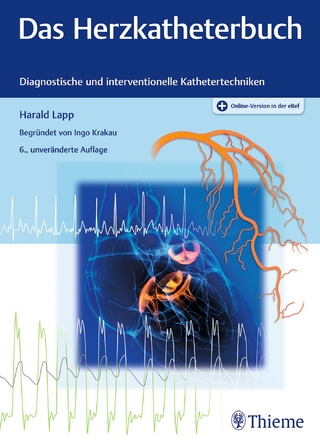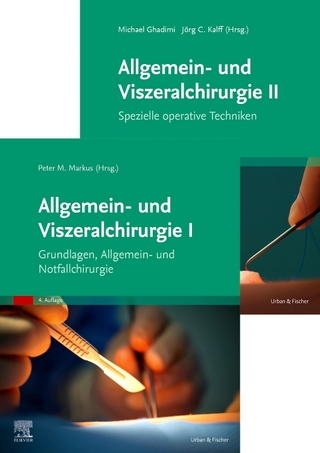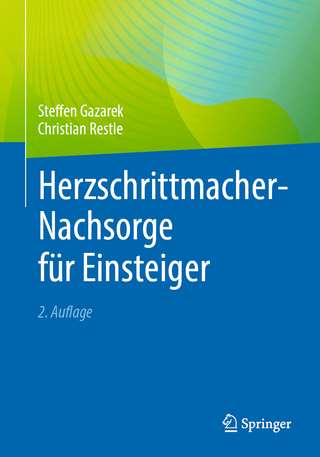Percutaneous Vascular Recanalization
Springer Berlin (Verlag)
978-3-540-08875-2 (ISBN)
The number of patients with occlusive peripheral vascular disease of the lower ex tremities is still growing as rapidly as the number of patients with coronary heart disease and cerebrovascular disease. Due to the increase in average life expectancy during the last few decades, more patients now need surgical vascular reconstruc tion. This actually means a demand for more centers specializing in vascular surgery and equipped with intensive care facilities, since the number of patients with cardio vascular and bronchopulmonary complications is increasing as well. In addition, the number of patients needing repeated vascular surgery has been growing. Therefore, the search for simple procedures to recanalize the arterial lumen which could be performed under local anesthesia is no surprise. Unfortunately peripheral vascular disease is still frequently treated by amputations. In 1967, the fIrst report in German on percutaneous recanalization of arteries with thrombotic occlusions and stenoses appeared in Rontgenfortschritte. The meth od described in this report had been published by Dotter and Judkins in 1964. Today, 10 years after their report, more data have been systematically collected on this method in Europe than in the United States, where it was developed. Possibly an explanation of this state of affairs is that nonsurgical treatment is favored more in Europe than in the United States. The scientifIcally based angiology established by Ratschow served as the foun dation for the development of diagnostic work-up and therapy in other directions beyond the questions of operability and surgical results.
1. Introduction.- I. Technique.- 2. Transluminal Angioplasty - Pathologic Basis.- 3. Transluminal Dilatation With Separate Teflon Catheters.- 4. Percutaneous Transluminal Recanalization (PTR) With the Double-Lumen Dilatation Catheter.- 5. Dilatation Technique of Iliac Artery Stenoses With Balloon Catheters.- 6. Transluminal Vascular Dilatation With a Modified Dilatation Catheter.- II. Histologic Experiences.- 7. Histopathologic Aspects of Transluminal Recanalization.- 8. Morphologic Alterations After Percutaneous Transluminal Recanalization of Chronic Femoral Atherosclerosis.- III. Experimental Studies.- 9. Transluminal Dilatation of Coronary Artery Stenosis - Experimental Report.- 10. Percutaneous Transluminal Dilatation (PTD) of Carotid Artery Stenosis.- IV. Medical Treatment.- 11. Drug Treatment Before and After PTR.- V. Monitoring Methods.- 12. Ultrasound Techniques for Follow-Up of Hemodynamic Changes After Transluminal Dilatation or Recanalization.- 13. Transvenous Xeroarteriography, an Appropriate Method for Angiographic Follow-Up After PTR.- VI. Results of PTR.- 14. Review of the Results of the Dotter Procedure.- 15. Late Results of Percutaneous Catheter Treatment (Dotter's Technique) in Occlusion of the Femoropopliteal Arteries, Stage II.- 16. Early and Late Results of PTD in Iliaca Stenosis.- 17. Cooperative Study of Results of PTR in Twelve Different Clinics.- VII. Complications.- 18. Complications In and After PTR.- 19. Complications of the Transluminal Angioplasty Excluding the Puncture Site Complications.- VIII. Special Indications.- 20. Transluminal Dilatation of a Stenosis in the Deep Femoral Artery.- 21. Percutaneous Transluminal Dilatation of Stenosis Behind AV-Fistulas in Hemodialysis Patients.- 22. PTR in Iliac Vein Thrombosis.- IX. PTR inCombination With Other Techniques.- 23. Percutaneous Transluminal Recanalization Combined With Fibrinolysis.- 24. Percutaneous Transluminal Recanalization (PTR) and Fibrinolysis: Fibrinolytic Treatment of Femoral Reocclusions Subsequent to PTR Procedures.- 25. Selective Arterial Clot Lysis With Angiography Catheter.- 26. Vascular Surgery and Transluminal Dilatation/Recanalization: Complementary Procedures for the Reconstruction of Peripheral Occlusive Diseases.- 27. Surgical Aspects of Vascular Reconstruction After PTR.- 28. Intraoperative Transluminal Angioplasty by Dotter's Method.- X. Indications.- 29. Indications for PTR From the Angiologic Point of View.- 30. Indications for PTR From the Surgical Point of View.- XI. Summary.- 31. Appraisal of the Techniques.- 32. Appraisal of the Therapy.- References to Chapters 5, 11, 15, 18-22, 24, 25, 28-31.
| Erscheint lt. Verlag | 1.12.1978 |
|---|---|
| Mitarbeit |
Assistent: G.J. van Andel |
| Zusatzinfo | XII, 206 p. |
| Verlagsort | Berlin |
| Sprache | englisch |
| Maße | 170 x 244 mm |
| Gewicht | 420 g |
| Themenwelt | Medizinische Fachgebiete ► Chirurgie ► Herz- / Thorax- / Gefäßchirurgie |
| Schlagworte | anesthesia • Angiography • Diseases • heart • Surgery • therapy • vascular surgery |
| ISBN-10 | 3-540-08875-X / 354008875X |
| ISBN-13 | 978-3-540-08875-2 / 9783540088752 |
| Zustand | Neuware |
| Informationen gemäß Produktsicherheitsverordnung (GPSR) | |
| Haben Sie eine Frage zum Produkt? |
aus dem Bereich
